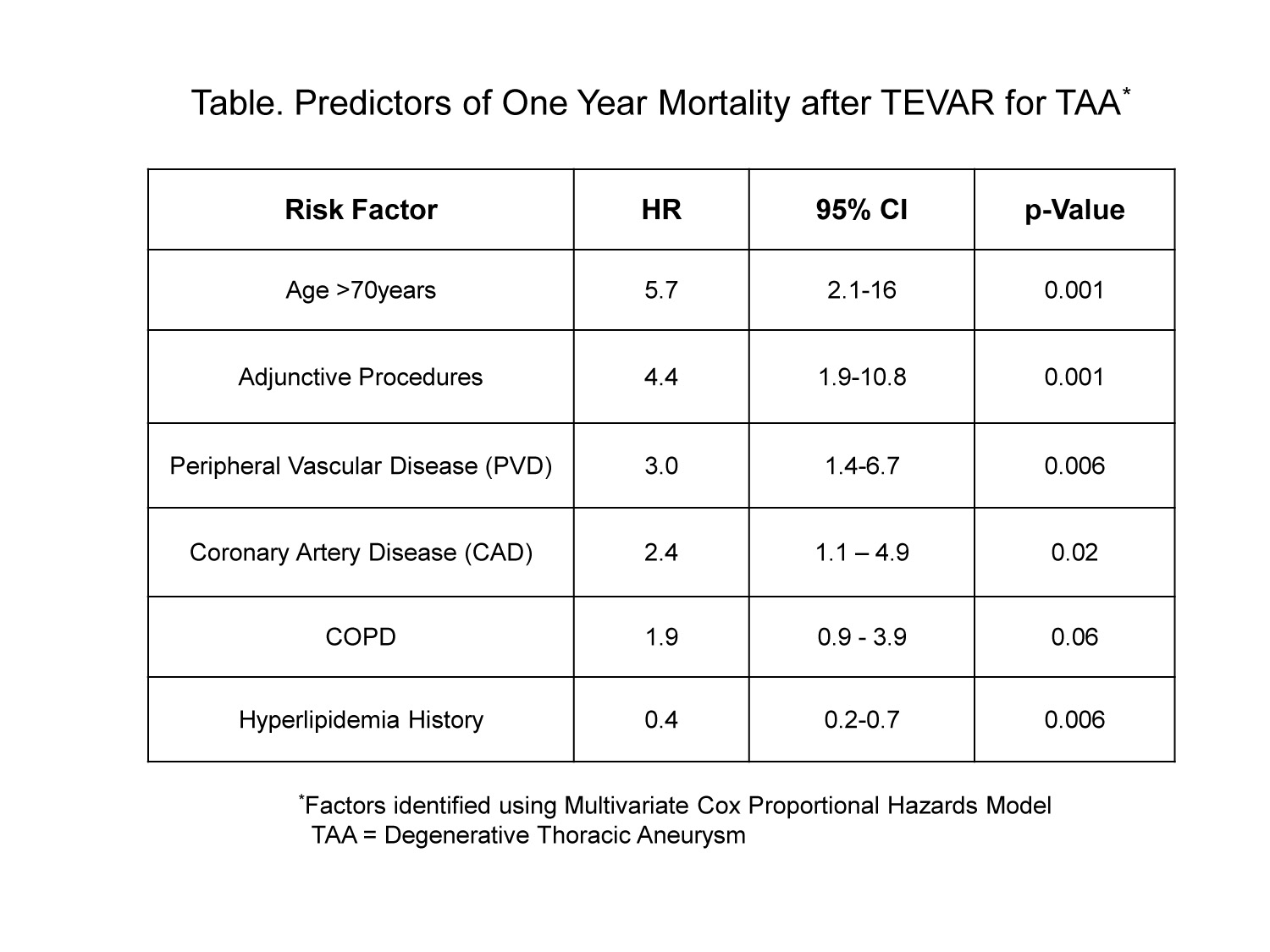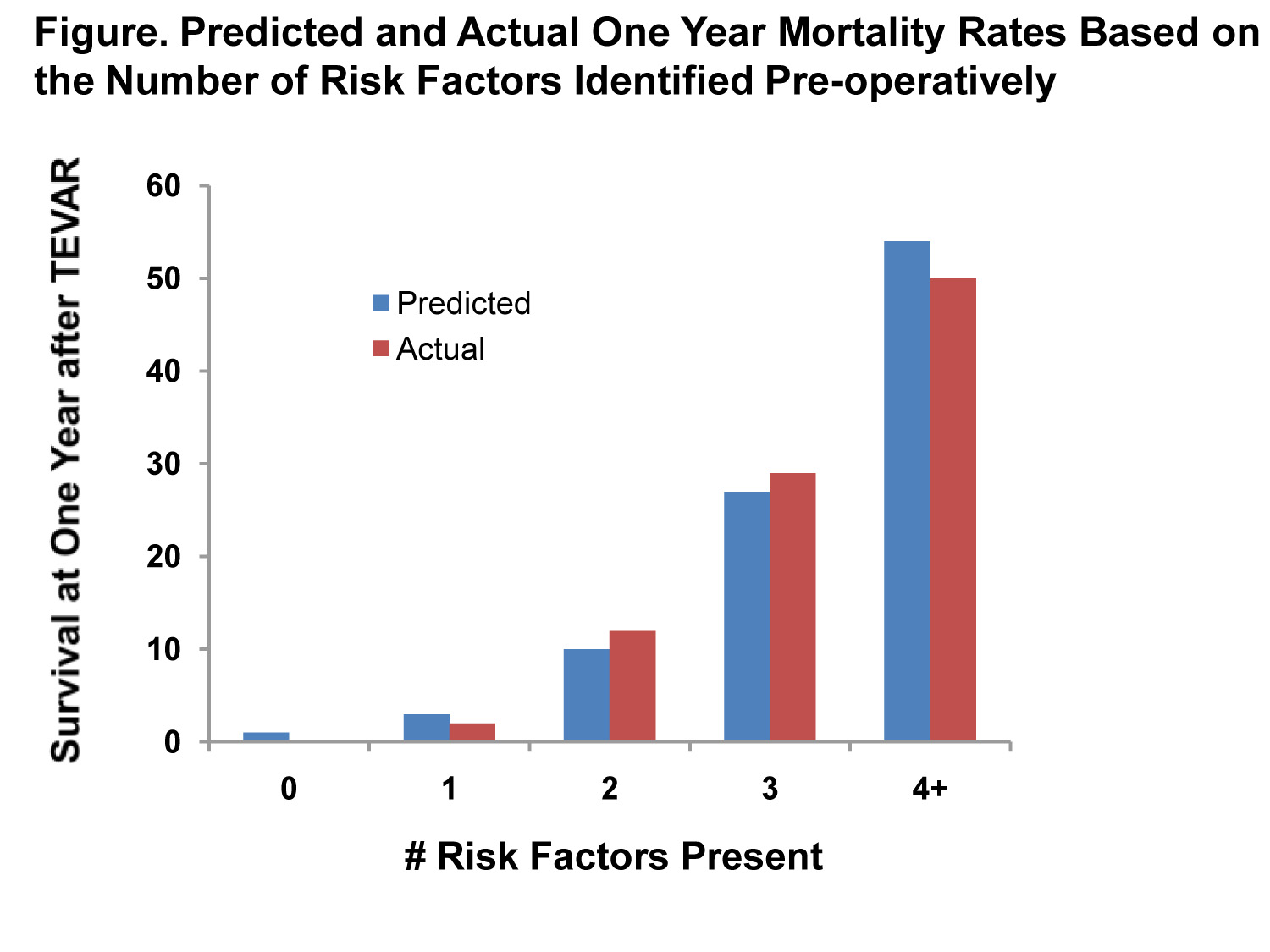Back to Annual Meeting Program
Preoperative prediction of one-year mortality after thoracic endovascular aortic aneurysm repair (TEVAR)
Salvatore T. Scali, Catherine K. Chang, Robert J. Feezor, Philip Hess, Jr., Thomas Beaver, Tomas D Martin, Thomas S. Huber, Adam W Beck
University of Florida College of Medicine , Gainesville , FL
Preoperative prediction of one-year mortality after thoracic endovascular aortic aneurysm repair (TEVAR)
Background: TEVAR is known to have a mortality benefit over open repair in thoracic aneurysm patients, and has become a mainstay of therapy. Because death before 1 year after TEVAR likely indicates an ineffective therapy, we have created a predictive model for 1-year mortality after elective TEVAR for aneurysm using preoperatively available risk factors.
Methods: A prospectively maintained registry of 526 TEVARs performed at the University of Florida between 2000 and 2010 was queried for patients with intact degenerative aneurysm as their primary pathology. Procedures with urgent or emergent indications were excluded. Baseline co-morbidities, anatomic details, and operative planning were recorded. Variables available in the preoperative setting were evaluated with univariate analysis, and then a multi-variate Cox proportional hazards analysis was performed to identify independent predictors of 1-year mortality.
Results: A total of 224 patients were identified and evaluated. Thirty-day and 1-year mortality were 3.1% (n=7) and 15% (n=33), respectively. Factors associated with 1-year mortality included: age >70, need for adjunctive intra-operative procedures (e.g. brachiocephalic/visceral stents, concomitant visceral de-branching procedures), peripheral vascular disease, coronary artery disease, and chronic obstructive pulmonary disease (Table). A diagnosis of hyperlipidemia was protective. When patients are grouped into those with 0, 1, 2, 3 or 4+ of these risk factors, the predicted one year mortality was 1, 3, 10, 27 and 54% respectively, which correlated well with the actual one-year mortality in our patients (Figure).
Conclusions: Factors predictive of 1-year mortality in TEVAR patients identified in the pre-operative setting can guide clinical decision-making. Older patients with multiple co-morbidities have very high predicted one-year mortality, and may be best served by waiting for a larger aneurysm size to justify the risk of intervention. 

Back to Annual Meeting Program
